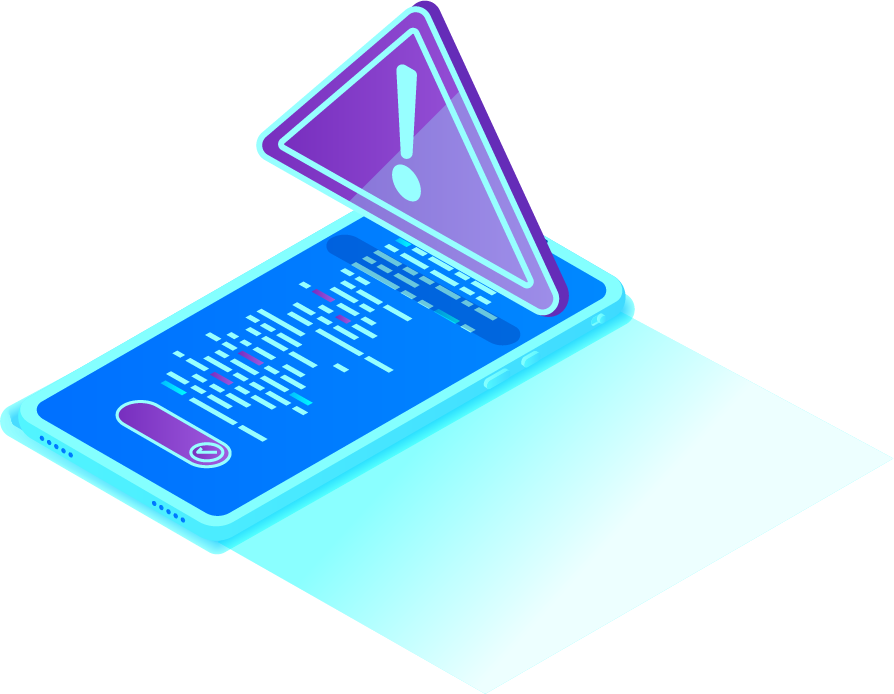
Download App Protector SDK
App Protector SDK is a mobile security component built into the application's code enabling runtime protection as well as a variety of mobile application hardening techniques, including jailbreak detection.

Android, with its rich app ecosystem, is particularly vulnerable to these types of attacks. For developers and security experts, understanding these risks and implementing effective defenses is essential.
This article will focus on the tactics cybercriminals use to compromise Android devices and explore how Runtime Application Self-Protection (RASP) SDK can help app developers protect their applications and users from remote access threats.
The flexibility of Android’s open-source operating system, while a key strength, also provides opportunities for exploitation. The Android environment allows for extensive customization, third-party app installations, and permission requests, which attackers often exploit. Additionally, the variety of Android devices and OS versions creates a fragmented ecosystem, making it difficult to enforce uniform security standards across the platform.
Remote access attacks on Android often exploit this flexibility through tactics like:
Runtime Application Self-Protection (RASP) SDK is a powerful tool that offers app developers real-time security by monitoring and responding to threats as they occur. While traditional app security methods focus on detecting malware after installation, RASP SDK focuses on detecting suspicious activities while the app is running, making it an ideal solution for protecting Android applications from remote access attacks. Here’s how RASP SDK addresses Android-specific security challenges:
Screen overlay attacks are particularly common on Android, as malicious apps can use this feature to create deceptive interfaces over legitimate apps. RASP SDK includes screen overlay detection, which can alert the app in case of an overlay attempt. Our advice is to integrate this functionality across all screens within the app to ensure comprehensive protection against phishing overlays and permission hijacking attempts.
Many Android-based remote access attacks exploit the accessibility permissions granted to malicious apps. Accessibility services help users with disabilities but can be misused by attackers to gain elevated control over the device. RASP SDK monitors accessibility permissions in real-time, detecting suspicious attempts by malware to access app data, especially in sensitive applications like banking or healthcare. This detection is particularly effective in stopping RATs and overlay attacks from accessing confidential data.
With Android 14+, RASP SDK can detect screen recording attempts, preventing attackers from capturing real-time app interactions. This feature is essential for high-security apps, as it stops attackers from observing sensitive information such as user credentials, personal messages, or financial data.
In addition to its detection capabilities, RASP SDK allows developers to program in-app responses or notifications in case of suspicious app behavior. For example, if a screen overlay or accessibility service access is identified, the app can display a warning to the user or terminate the session to protect sensitive data. These alerts provide an added layer of protection, especially for apps that handle confidential information.
While RASP SDK provides robust protection, it’s most effective when combined with other security best practices tailored to Android environments:
While RASP SDK offers critical security for Android applications, it has some limitations developers should be aware of:
For a holistic security approach, developers should consider integrating RASP SDK with other tools, such as Mobile Threat Defense (MTD) solutions and behavioral monitoring systems.
Android’s open-source design and extensive app ecosystem make it a prime target for remote access attacks. With the right security measures, however, developers can protect their apps and users from these sophisticated threats. RASP SDK’s real-time monitoring, screen overlay detection, accessibility permission checks, and screen recording detection (from Android 14+) offer essential layers of defense against remote access attacks.
Developers building high-security applications—particularly in sectors like finance, healthcare, and enterprise—should consider implementing RASP SDK to provide users with the protection they need. With comprehensive security practices and proactive threat detection, Android developers can create trusted, resilient applications that stand up to the ever-evolving tactics of cybercriminals.

App Protector SDK is a mobile security component built into the application's code enabling runtime protection as well as a variety of mobile application hardening techniques, including jailbreak detection.
To find out more about our App Protector solution, contact us or visit our blog section.